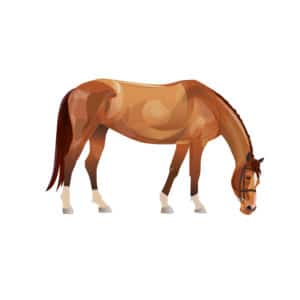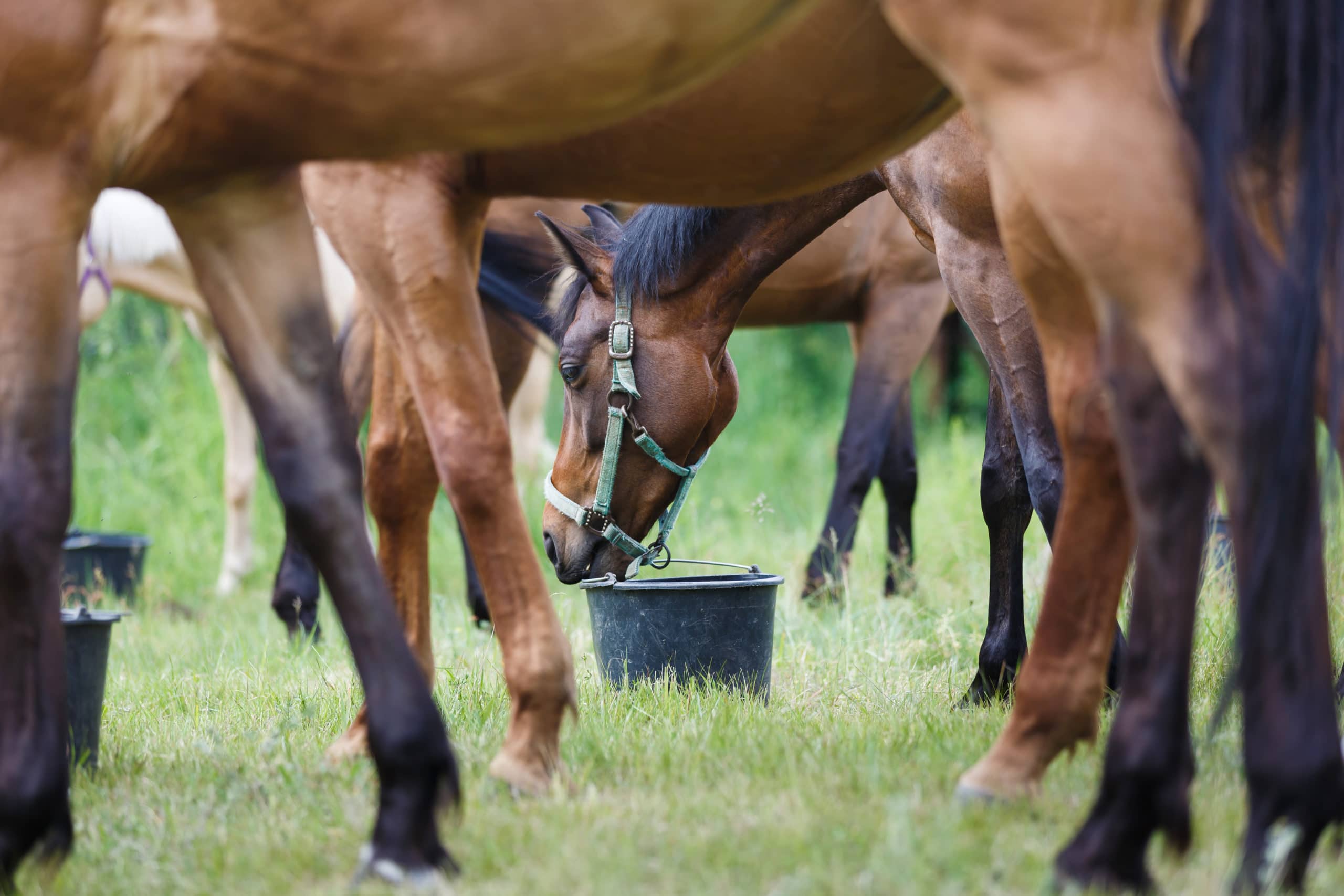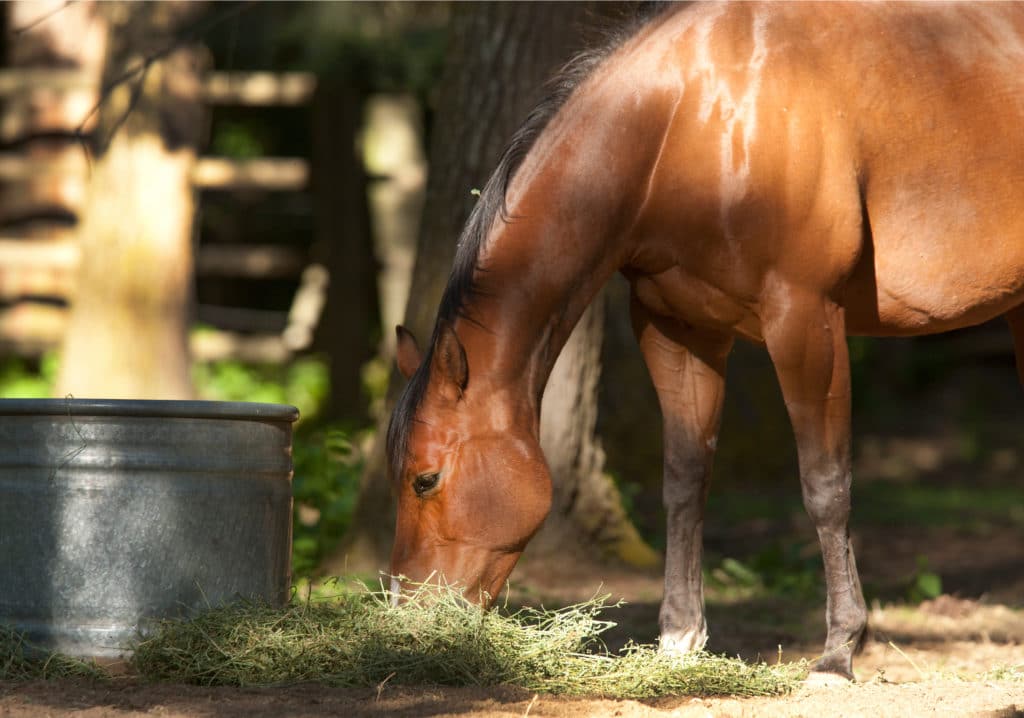Uncategorized
FEEDING OUR HORSES UNDER COST AND INFLATION PRESSURES
With the economic situation and rising inflation, many of us find ourselves looking at every penny that we spend and trying to find economies where we can.
Listening to our customers we know that this is a very real situation, we wanted to do our bit to work out the best way of feeding our horses without putting their general health in jeopardy and looking at costs on a daily basis for horse feed.

THE BRIEF:
A rising 6 year old Eventer, 16 hands, 550 Kgs currently competing at BE90, schooling at BE100 with a view to competing Novice towards the mid/end of the season.
The horse gets 2 to 3 hours turnout per day with ad lib hay when stabled.
In hard work, with one day off per week, 2 to 3 flatwork sessions per week, 1 to 2 jump or XC sessions per week, 1 gallop per week and 1 to 2 hacks per week. Has no clinical issues with a body score of 5.
THE PHONE CALLS
We then telephoned 6 of the large feed suppliers with the identical brief and asked for their opinions of what we should be feeding this horse. We will provide some insight into our findings.
THE DOUBLE CHECK
All our data was then sent to our Nutritional team in Australia comprising of Nutritionists, Clinical Nutritionists, Naturopaths, Herbalists not to mention our geneticists and experts on the equine gut microbiome for their input and views on what we were advised to feed this horse.
THE DAILY COST

THE FINDINGS
It would be highly inappropriate to name names and therefore we will speak in generalities of the diets we were told to provide this horse.
- All the feeds were “complete” feeds from Brands A to F
- All the bags contained at least three by-products (in most cases considerably more) that the Hi Form team would deem inappropriate for an equine – GM Soya Husks, GM Soya Hulls, GM Soya Bean Meal, Wheatfeed, Rice bran, Distillers grains, Maize, Molasses, Ground BeetPulp, Micronised Wheat, nutritionally improved straw to name a few
- Some of the bags included chemicals
- Whilst professing fibre many of the bags showed sub 20% fibre content
- Many of the oils used are heat extracted rather than cold pressed
- We were told that the feeds all contained everything a horse required on a daily basis for full health – we would dispute that – the quantity and quality of the vitamins, minerals, amino acids and electrolytes we would not agree with and in our opinion, there were ingredients missing.
- We are completely reliant that these complete feeds are mixed thoroughly to get evenly dispersed ingredients.
- Some of the companies promoting feeding a mash of some description – irrespective of the ingredients we would not condone this as horses require to grind to create saliva to masticate their feed correctly with any sloppy feed, this cannot occur.
The genetic evolution of the horse has produced a metabolism that works exceptionally well on natural raw feeds, which includes a high level of natural roughage i.e. Hays, Alfalfa etc.
In the horse feed market, there are shelves full of pretty labels and colourful packaging that say that it will help your horse gain energy, add a shiny coat and good for the gut, but how accurate are they and what are all those numbers and letters on the back of the packaging? Would you eat something that was produced from a waste product? If your answer is no, then why should your horse?
Did you know that your horse requires 13 vitamins, 21 minerals, 2 essential fatty acids and 8 amino acids for body maintenance, energy, and growth?
Natural feeds are also preventative nutrition for your horse as they assist in preventing disease, illness, degenerative conditions and help promote recovery from illness or injury, immune system boosting and resilience.
Natural feeding is more economical, healthier, preventative, contains no nasty’s, no fillers, and no toxins.
OUR VIEW

At Hi Form our preference is to feed naturally with components that are suitable for the species. The costings in the diagram were made up of the following: –
Emerald Green Alfalfa-mazing
Cold Pressed Linseed Oil
Whole Oats from Highclere Feeds
Oxydane
CONSIDER
The anatomy and physiology of our horses has not changed for thousands of years.
The feed industry has changed in the last thirty years.
Horses have not suddenly changed their digestive systems, they continue to be strict herbivores and should be fed according to the species.
One paper in particular reviews natural feeding strategies for the evolution of the horse. This paper concludes that “the equine gastrointestinal tract is not evolutionarily adapted to digest diets fed in current feeding practices” (N. Hilmo et al, 2013).
When you increase or decrease prepared feeds, immediately it throws the balance of the feed out by affecting the level of vitamins, minerals and other ingredients, this is something that horse owners must consider.
If you are preparing your own feed this allows you to adjust the levels of energy, protein and other components in the feed which cannot be done with premix or pelletised feed.
CONCLUSION
By feeding a natural diet you are providing your horse with components that can be readily digested and at the same time are able to manage the protein, fibre and energy according to your horses workload.
By using Oxydane in conjunction with natural feeds, you are providing all the vitamins, minerals, amino acids and electrolytes to keep your horse in premium condition inside and out.
Feeding this way your horse’s needs are fully met.
It is not as expensive as you thought! And far healthier for your best friend.



